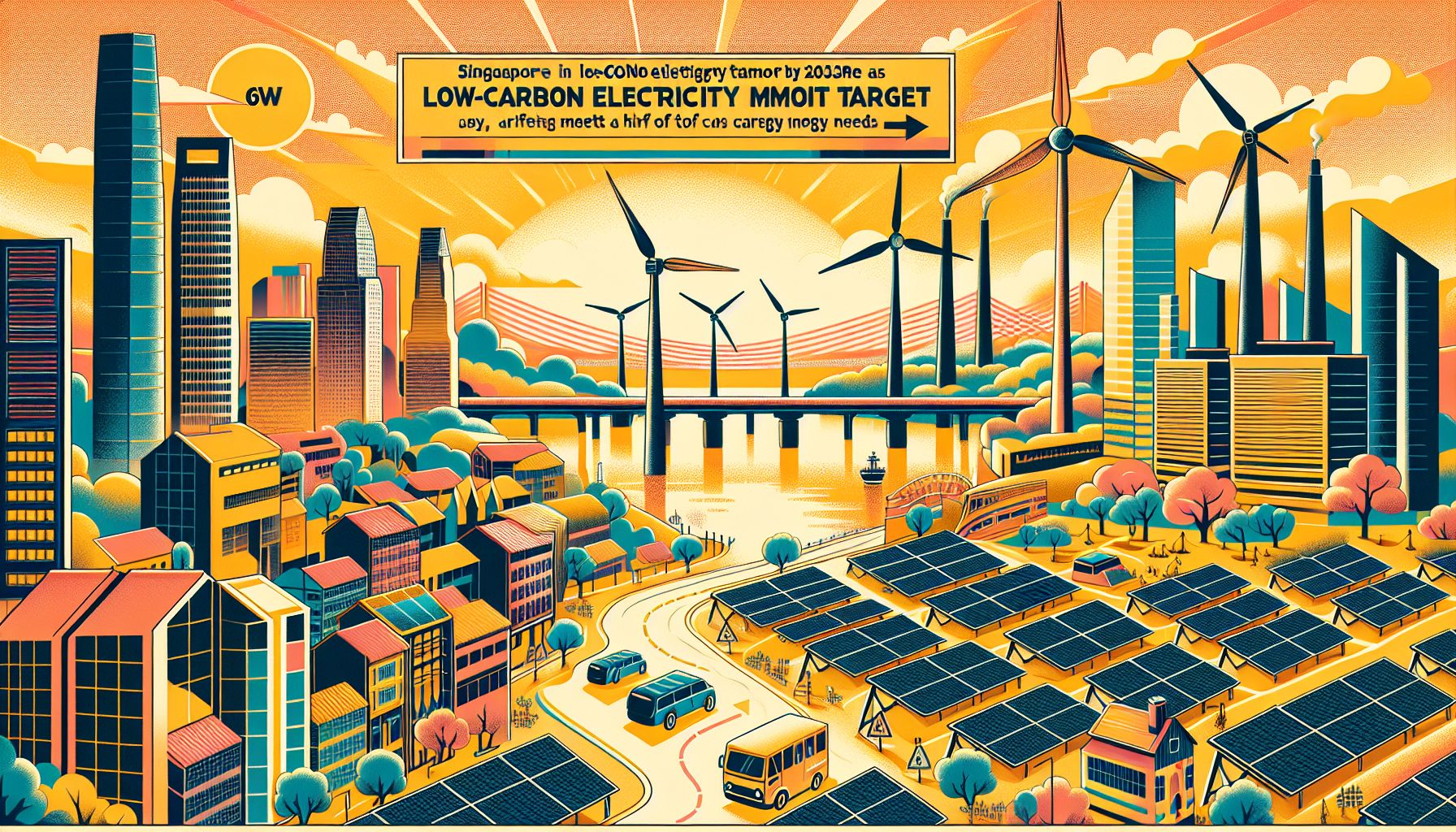Singapore Boosts Low-Carbon Electricity Import Target to 6GW by 2035

Singapore, Friday, 6 September 2024.
Singapore raises its low-carbon electricity import goal from 4GW to 6GW by 2035, aiming to meet a third of its energy needs. This ambitious increase reflects strong interest from credible parties and marks a significant step in Singapore’s efforts to reduce its carbon footprint.
Rationale Behind the Increased Target
The Energy Market Authority (EMA) of Singapore has cited robust interest from credible parties as one of the key reasons for raising the import target. This heightened interest ensures that Singapore can secure a reliable future energy supply while transitioning towards more sustainable energy sources. Currently, natural gas accounts for 95% of the country’s electricity generation, contributing significantly to its carbon emissions. By shifting towards low-carbon electricity imports, Singapore aims to mitigate its environmental impact significantly[1].
Key Milestones and Projects
On September 5, 2024, EMA granted conditional licenses to five Indonesian solar projects during the Indonesia International Sustainability Forum in Jakarta. These projects, including those by Pacific Medco Solar Energy and Keppel Energy, aim to deliver 2 GW of greener energy to Singapore by 2028. Additionally, Singa Renewables and Shell Eastern Trading received conditional approvals to import a total of 1.4 GW of low-carbon electricity from Indonesia[2]. This marks a substantial step in Singapore’s journey to meet its increased target.
Challenges and Setbacks
Despite the progress, Singapore has faced challenges in its electricity import initiatives. The country experienced setbacks in importing hydropower from Laos due to transmission disagreements with Thailand and Malaysia. Currently, Singapore imports 100 MW of hydropower from Laos under a trial that began in 2022. Similarly, a two-year trial to import 100 MW of electricity from Malaysia was announced in early 2023 and is set to commence in 2024[1]. These trials are critical in understanding the complexities and logistics involved in cross-border electricity imports.
Future Prospects and Pathways
Singapore’s ambitious target aligns with its broader goal of achieving net-zero emissions by 2050. The EMA is exploring various decarbonization pathways, such as hydrogen, solar, deep geothermal, nuclear energy, and carbon capture technologies. These initiatives are crucial for reducing the power sector’s contribution of 40% to the nation’s total carbon emissions. The country’s strategy includes not only increasing imports but also enhancing its domestic renewable energy capabilities[2].
Global Context and Comparisons
Singapore’s efforts are part of a broader global trend towards low-carbon electricity. For instance, the European Union generates 66.8% of its electricity from low-carbon sources, including nuclear, wind, and solar energy. This global shift underscores the importance of transitioning to sustainable energy to combat climate change effectively. Countries like China are also reforming their electricity markets to encourage the adoption of renewable energy, demonstrating a global commitment to reducing carbon footprints[3].

